The dramatic arts in Japanese culture have developed through the years into many different genres. The variations in approaches can be attributed to the unique culture that each style was formed in, and the audiences that viewed and supported them. Modern Japanese theater can be traced back to Noh, but it also has roots in Kabuki and Bunraku. Japanese theater has been strongly influenced by movement and dance and this theme permeates each in their own way.
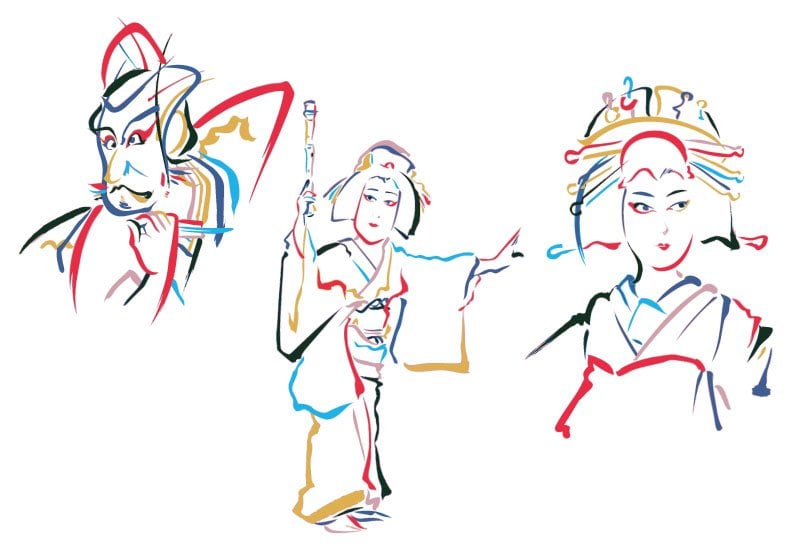
NOH AND KYOGEN
The fourteenth-century father-son duo Kanami Kiyotsugu and Zami Motokiyo are credited with introducing the ritualistic Shinto dances of Sarugaku and Dengaku to the Japanese aristocracy in an artistic manner. The Shogun Ashikaga Yoshimitsu was very impressed by the acrobatic choreography of the pair and granted them high privileges equal to members of the court. It was in this environment that Kanami was able to write and perfect stories that continue to be performed today. He blended his background in Shinto with the tastes and grandeur of the aristocracy, which Noh have become to be known for.
Nogaku: Noh and another popular dramatic art form called Kyogen developed simultaneously and eventually were combined into Nogaku
Noh, the Art Form: A general history and overview of the performance art known as Noh.
Noh Masks: An important aspect of Noh Theater are the masks worn by the actors. There are all types of styles, ranging from young men and women to elderly folk to demons and animal spirits.
The Noh: Recognized as an important international theatrical cornerstone, Noh still thrives today with over 600 years of Japanese history standing behind it.Noh
Mask Gallery: A Noh mask gallery with descriptions of the different styles and masks.
Japanese Theater: A easy to read list about the different forms and influences of Japanese theater.
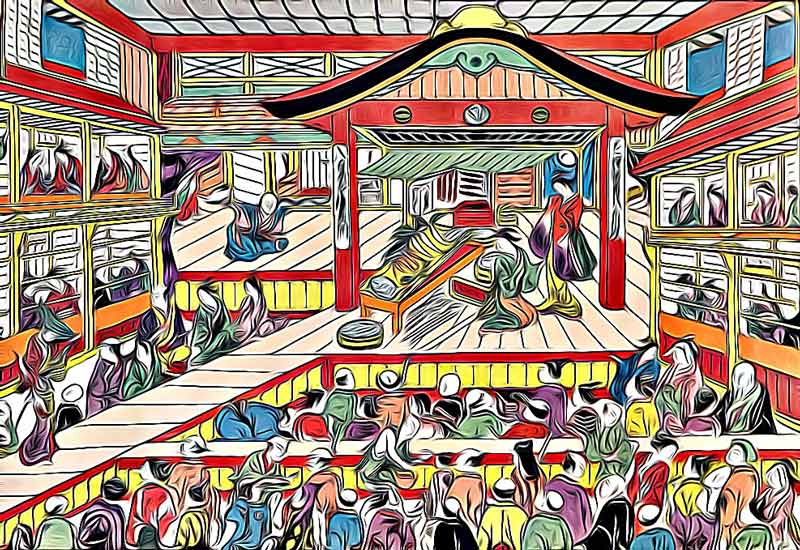
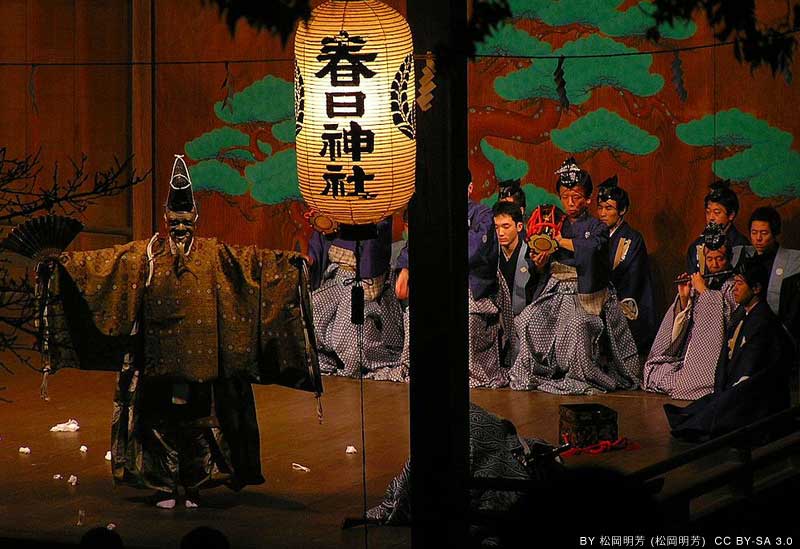
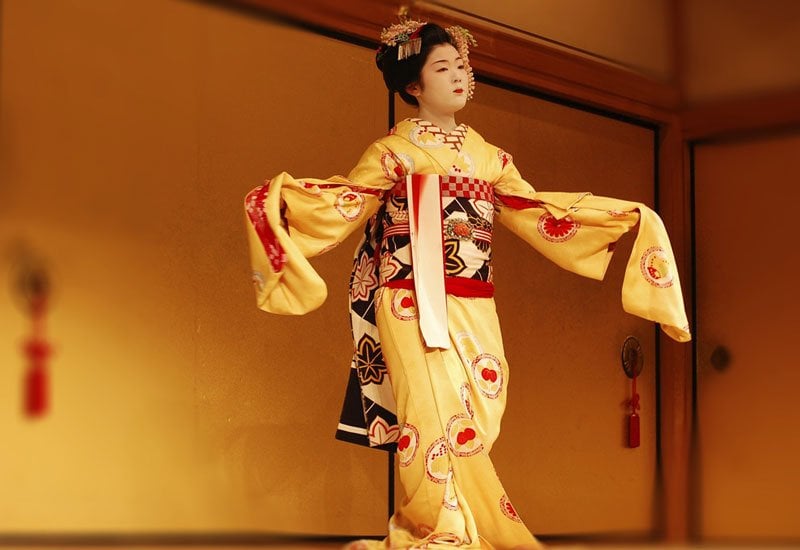
KABUKI
Kabuki is a more populist form of theater, than Noh, which is more elite. Its major developments occurred between 1600-1800. Originally performed primarily by women, Kabuki became quickly known to convey outrageous and often sexually overt themes. The themes were not contained to the stage, however, and government officials banned women from performing and allowed only young men to perform to prevent prostitution advertising. When it became apparent that the young men were following in a similar fashion to the women, Kabuki performers became restricted to adult men only. This created the situation of the Onnagata, in which men played the roles of women.
Kabuki 21: Information on plays, current and past performers, the history, theaters, traditions and a glossary of terms.
All About Kabuki: A wealth of information on Kabuki, with insights from a professional Kabuki Onnagata.
Kabuki Fact Sheet (PDF): Japanese information about what Kabuki is today and its history.
Kabuki Academy: Mary Mariko Ohno’s school of Kabuki with online tutorials of dancing, stage makeup, kimono wrapping and traditions and culture. Lessons on Skype are also available.
Women in Kabuki: Women were banned from performing Kabuki in 1629, but women returned to the stage in the Meiji period, and throughout the 20th century there have been select troupes of all women performers.
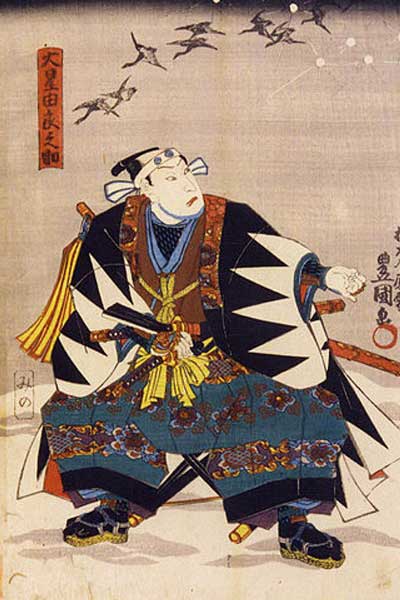
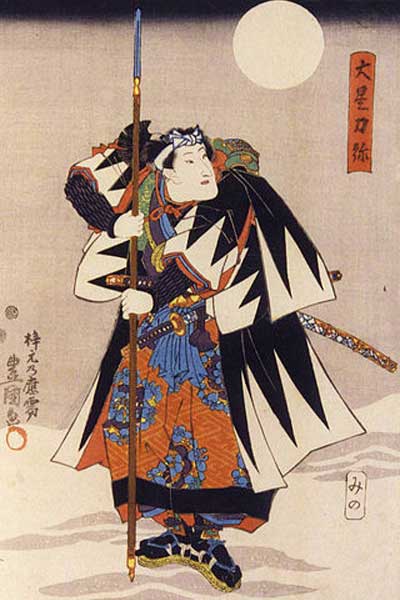
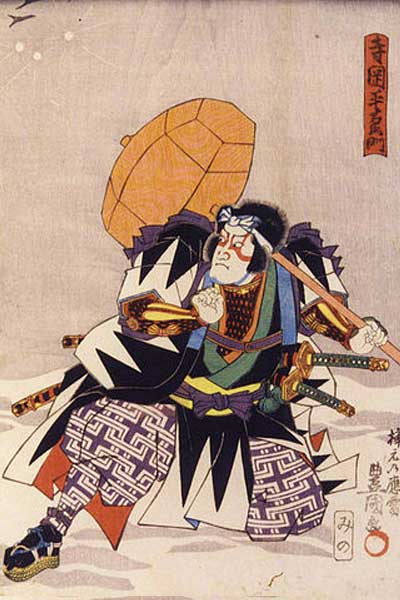
BUNRAKU
Japan has a long history of Puppet Theater. Puppeteers and storytellers also known as ningyo shibai would travel around Japan, specifically in the countryside and in rural areas, delivering blessings and teachings to the village people. Some playwrights preferred puppets in theater including the playwright Chikamatsu Monzaemon. Mystical characters and great heroes could move in more exaggerated fashions than any single actor could in real life. Bunraku is named after the theater. Burakuza because the popular forms of puppetry were refined into the style that it is known as today.
Berkeley and Bunraku (PDF): All about Bunraku, from Berkeley University.
The World of Puppetry: A scrapbook collection of puppetry, including Bunraku puppetry.
The Barbara Curtis Adachi Bunraku Collection: One of the most extensive collections of Bunraku in the world, including information about plays, performers, backstage subjects, and a slide image collection.
Bunraku Performers: Omo-zuki are the men that operate Bunraku puppets. The puppet themselves are about two-thirds the size of an average adult, and they require the coordinated efforts of three men. The puppeteers usually wear all black costumes so that the focus of the performance is on the puppets.
Japan National Tourism Organization: An official explanation of this dramatic art, with diagrams of traditional stage architecture, and puppet mechanics.costumes so that the focus of the performance is on the puppets.
What is Bunraku: An explanation and overview of Bunraku and it’s status in modern theater.
The Imada Puppet Theater: Princeton University hosted The Imada Puppet Theater, a historically significant troupe.
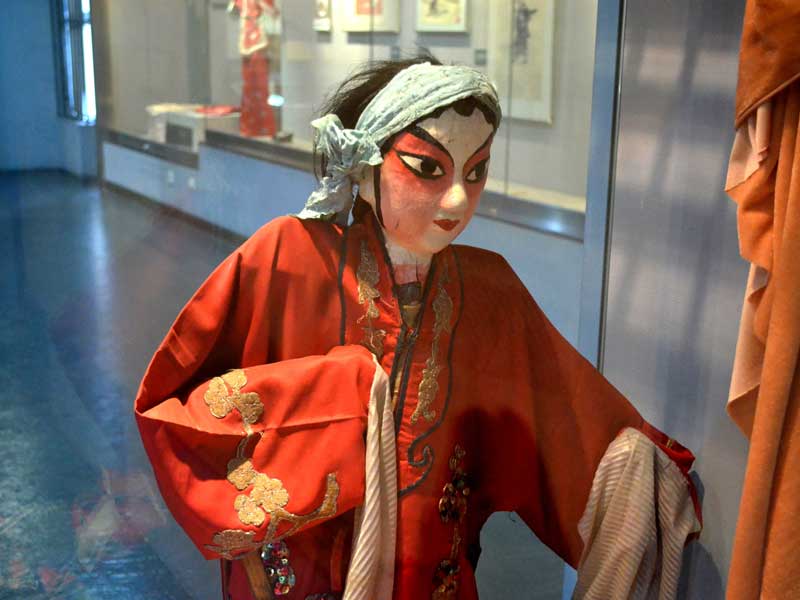
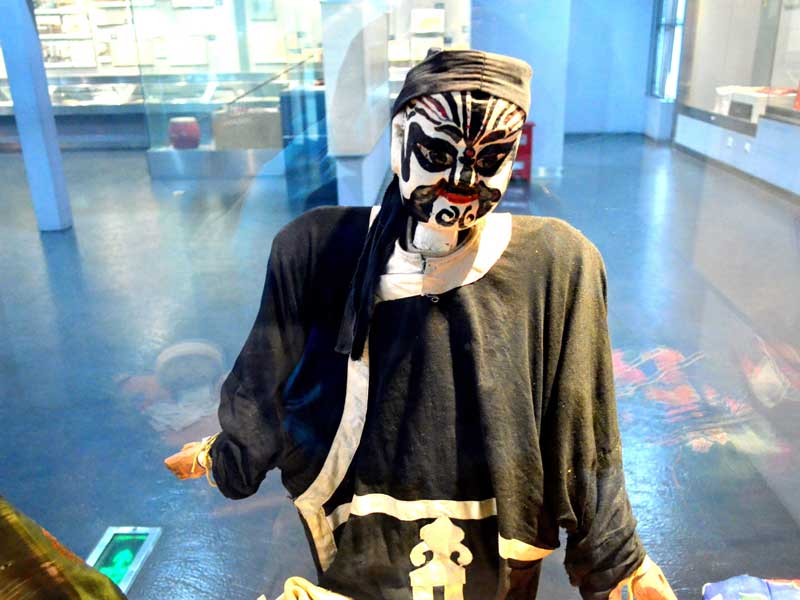
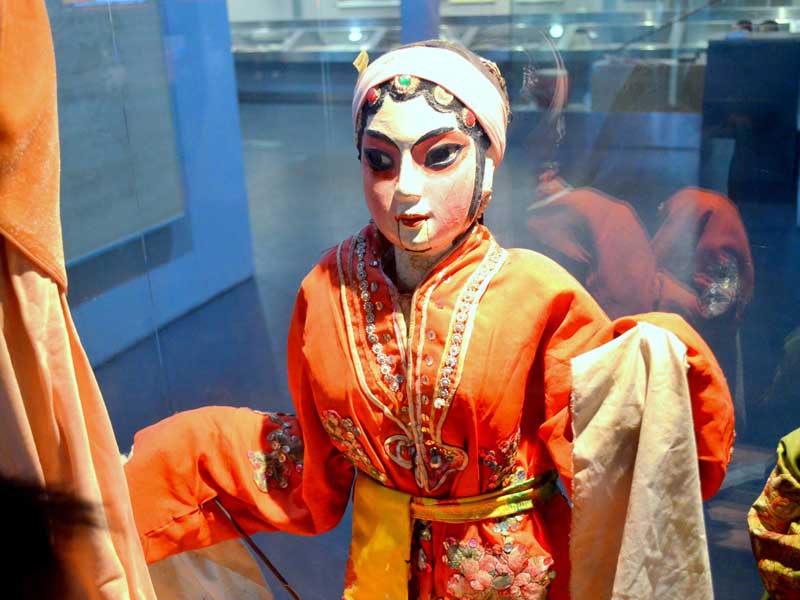
MODERN JAPANESE THEATER
All of Japanese history has influenced what is known today as modern Japanese theater. Japanese dramatic arts have also been influenced by technology. The stage is no longer a literal stage and plays and scripts have been interpreted and adapted on the big screen as well as on television.
Avant Garde: Japanese Avant-Garde Theater.
Thrill of Japanese Theater Interesting look into the attraction of traditional theater today.
Modern Japanese Theatre: Shed its Insularities.
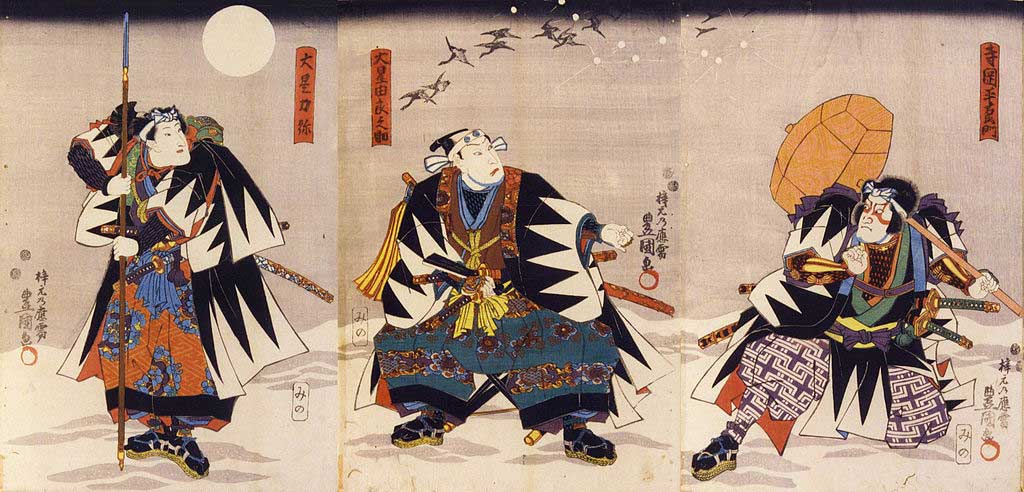
Home Theater Seating
- Comfortable Movie Theater
- Movie Theater Seating For Sale
- Movie Furniture
- Fortress Theater Seating
- Berkline Home Theater Seating
- Palliser Home Theater Seats
- Space Saver Recliner Chairs
- Theater Room Sectionals
- Theater Seating Sale
- Theater Room Area Rugs
- Best Sectional
- Double Recliner Sofa
- Ready To Ship Sectionals
- 4 Seater Leather Recliners
- Comfortable Modern Chair
- Octane Seating Dealers
- 100% Leather Theater Chairs
- Sales On Sectional Couches
- Top Rated Recliners Under $500
- High End Sectional Couches
Decor & Accessories
- Movie Theater Rooms
- Home Theater Table
- Movie Themed Rugs
- Home Theater Acoustics
- Quality Leathers
- Wireless Sound System
- God Of Theater
- Bonded Leather Cleaner
- Theatre Room Decor
- Black Leather Couch With Blue Lights
- Best Buy Media Chair
- Brown Love Seat
- Palliser Flicks
- Sectionals With Charging Stations
- Blue Recliners For Sale
- Palliser Living Room Sectionals
- Theater Seating Built In Riser
- Palliser Retailers
- Leather Reclining Sofas With Cupholders
Top Pages
- Octane Theater
- Magnolia At Best Buy
- Theaters Seating Seats Phone Number
- Home Theatre in a Box
- Theater Recliner Seats
- Designing A Home Theater Room
- Home Theater Lighting Design
- How Much Does A Home Theater Cost
- Movie Theater Design
- Fabric Sofa Set
- Leather Power Reclining Sectional
- Foam Pocket
- Modern Black Leather Sectionals
- Modern Living Room Sofa Set
- Small Sofa Recliner
- Who Sells The Best Recliners
- Electric Couch Recliners
- Ready To Ship Sofas
- Oversized Living Room Sets
- Different Couch Styles

